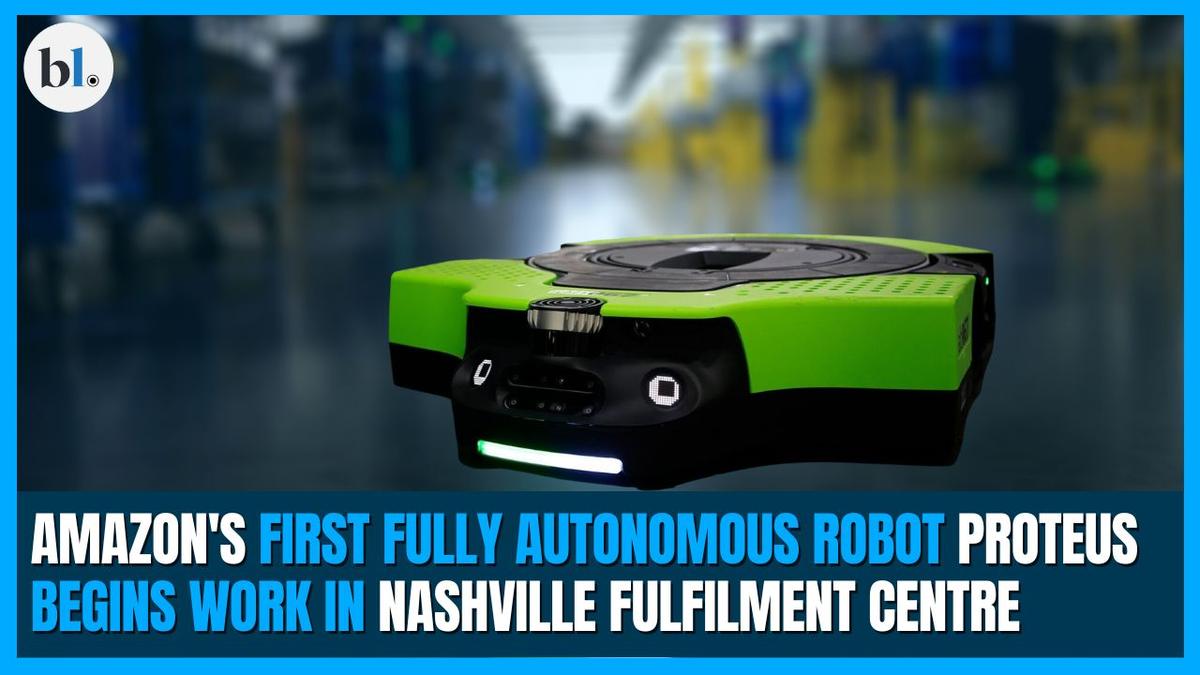Amazon’s Proteus: The Future of Fulfilment in Nashville
In the bustling heart of Nashville, Tennessee, Amazon has unveiled its latest innovation in warehouse technology: Proteus, the company’s first fully autonomous mobile robot. As the holiday shopping season ramps up, Proteus is already making its mark in Amazon’s smart fulfilment centre, working alongside human employees to streamline operations and enhance efficiency.
The Evolution of Fulfilment Centres
Udit Madan, Vice President of Amazon Worldwide Operations, shared insights into the company’s journey from manual processes to advanced automation. "In the early 2000s, we went from two to 50 fulfilment centres," he explained. The launch of Fulfilment by Amazon in 2006 marked a significant turning point, as the company recognized the need to reinvent its warehousing strategies to keep pace with exponential growth. The acquisition of Kiva Systems in 2012 was pivotal, introducing a goods-to-person model that drastically reduced the need for employees to walk long distances within the warehouse. Instead, mobile robots began bringing inventory directly to workers, revolutionizing the fulfilment process.
Meet Proteus: A Friendly Robot Companion
Proteus stands out not just for its functionality but also for its design. With a bright green exterior and a user-friendly demeanor, this autonomous robot is engineered to navigate the warehouse environment seamlessly. Unlike its robotic counterparts, which are confined to specific areas, Proteus can operate freely, detecting and avoiding obstacles in real-time. This capability allows it to work safely alongside human co-workers, enhancing the overall workflow without compromising safety.
The name "Proteus" pays homage to one of Neptune’s moons, reflecting Amazon’s commitment to innovation and exploration in the realm of robotics. Proteus is part of a broader fleet of warehouse robots, which includes Cardinal, Robin, and Sparrow, each designed to fulfill specific roles within the fulfilment centre.
The Role of AI and Robotics in the Future
At the recent "Delivering the Future 2024" event in Nashville, Amazon showcased its vision for the next generation of fulfilment centres, powered by cutting-edge AI and robotics. Madan emphasized the transformative impact of these technologies on operational efficiency. "To understand how transformative AI and robotics have been in how we operate, I thought I’d start with a little bit of history," he noted, reflecting on Amazon’s evolution since its inception in 1995.
The integration of AI and robotics not only streamlines processes but also opens up new career opportunities. As automation becomes more prevalent, roles in robotics maintenance and oversight are expected to grow, creating a demand for skilled workers in these fields. This shift highlights Amazon’s commitment to not just enhancing productivity but also fostering a workforce equipped to thrive in a technology-driven landscape.
A New Era of Efficiency and Safety
The introduction of Proteus and similar robots marks a significant step forward in the logistics and fulfilment industry. By working alongside human employees, these robots enhance operational efficiency, allowing for faster processing of orders, especially during peak seasons like the holidays. The collaboration between humans and robots is designed to create a more dynamic and responsive work environment, where both can thrive.
As Amazon continues to innovate and expand its capabilities, the role of robots like Proteus will likely become even more integral to the company’s operations. The future of fulfilment is not just about speed and efficiency; it’s also about creating a harmonious working relationship between technology and human talent.
In this rapidly evolving landscape, Amazon’s commitment to leveraging advanced robotics and AI positions it at the forefront of the logistics revolution, setting a benchmark for the industry and redefining what is possible in warehouse operations.
